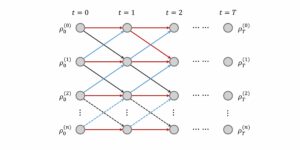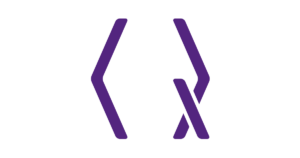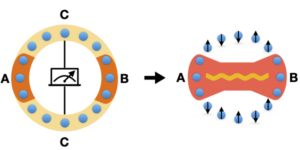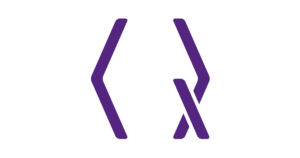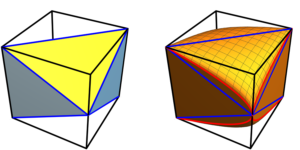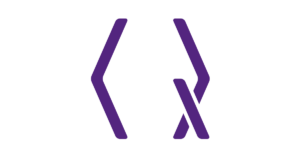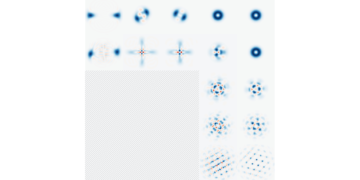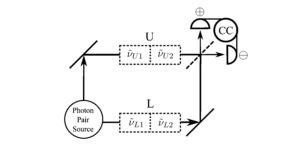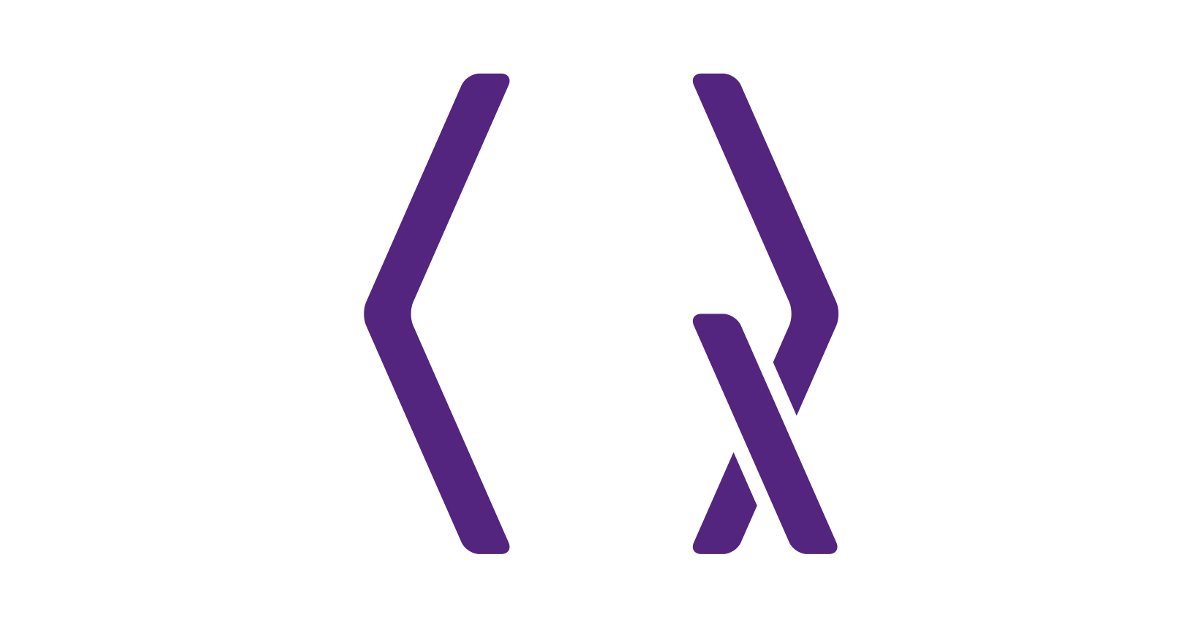
1QC Ware
2Université de Paris, CNRS, IRIF
3Quantitative Research, JPMorgan Chase
4Global Technology Applied Research, JPMorgan Chase
Find this paper interesting or want to discuss? Scite or leave a comment on SciRate.
Abstract
Quantum machine learning has the potential for a transformative impact across industry sectors and in particular in finance. In our work we look at the problem of hedging where deep reinforcement learning offers a powerful framework for real markets. We develop quantum reinforcement learning methods based on policy-search and distributional actor-critic algorithms that use quantum neural network architectures with orthogonal and compound layers for the policy and value functions. We prove that the quantum neural networks we use are trainable, and we perform extensive simulations that show that quantum models can reduce the number of trainable parameters while achieving comparable performance and that the distributional approach obtains better performance than other standard approaches, both classical and quantum. We successfully implement the proposed models on a trapped-ion quantum processor, utilizing circuits with up to $16$ qubits, and observe performance that agrees well with noiseless simulation. Our quantum techniques are general and can be applied to other reinforcement learning problems beyond hedging.
► BibTeX data
► References
[1] Hans Buehler, Lukas Gonon, Joseph Teichmann, and Ben Wood. “Deep hedging”. Quantitative Finance 19, 1271–1291 (2019). url: https://doi.org/10.1080/14697688.2019.1571683.
https://doi.org/10.1080/14697688.2019.1571683
[2] Hans Buehler, Lukas Gonon, Josef Teichmann, Ben Wood, Baranidharan Mohan, and Jonathan Kochems. “Deep Hedging: Hedging Derivatives Under Generic Market Frictions Using Reinforcement Learning”. SSRN Electronic Journal (2019). url: http://dx.doi.org/10.2139/ssrn.3355706.
https://doi.org/10.2139/ssrn.3355706
[3] Shihao Gu, Bryan T. Kelly, and Dacheng Xiu. “Empirical Asset Pricing Via Machine Learning”. SSRN Electronic Journal (2018). url: http://dx.doi.org/10.2139/ssrn.3159577.
https://doi.org/10.2139/ssrn.3159577
[4] Hyeong Kyu Choi. “Stock Price Correlation Coefficient Prediction with ARIMA-LSTM Hybrid Model” (2018). url: https://doi.org/10.48550/arXiv.1808.01560.
https://doi.org/10.48550/arXiv.1808.01560
[5] Yada Zhu, Giovanni Mariani, and Jianbo Li. “Pagan: Portfolio Analysis with Generative Adversarial Networks”. SSRN Electronic Journal (2020). url: https://dx.doi.org/10.2139/ssrn.3755355.
https://doi.org/10.2139/ssrn.3755355
[6] Kang Zhang, Guoqiang Zhong, Junyu Dong, Shengke Wang, and Yong Wang. “Stock Market Prediction Based on Generative Adversarial Network”. Procedia Computer Science 147, 400–406 (2019). url: https://doi.org/10.1016/j.procs.2019.01.256.
https://doi.org/10.1016/j.procs.2019.01.256
[7] Álvaro Cartea, Sebastian Jaimungal, and Leandro Sánchez-Betancourt. “Deep Reinforcement Learning for Algorithmic Trading”. SSRN Electronic Journal (2021). url: https://dx.doi.org/10.2139/ssrn.3812473.
https://doi.org/10.2139/ssrn.3812473
[8] Yue Deng, Feng Bao, Youyong Kong, Zhiquan Ren, and Qionghai Dai. “Deep Direct Reinforcement Learning for Financial Signal Representation and Trading”. IEEE Transactions on Neural Networks and Learning Systems 28, 653–664 (2017). url: https://doi.org/10.1109/TNNLS.2016.2522401.
https://doi.org/10.1109/TNNLS.2016.2522401
[9] Yunchao Liu, Srinivasan Arunachalam, and Kristan Temme. “A rigorous and robust quantum speed-up in supervised machine learning”. Nature Physics 2021 17:9 17, 1013–1017 (2021). url: https://doi.org/10.1038/s41567-021-01287-z.
https://doi.org/10.1038/s41567-021-01287-z
[10] Shantanav Chakraborty, András Gilyén, and Stacey Jeffery. “The Power of Block-Encoded Matrix Powers: Improved Regression Techniques via Faster Hamiltonian Simulation”. In Christel Baier, Ioannis Chatzigiannakis, Paola Flocchini, and Stefano Leonardi, editors, 46th International Colloquium on Automata, Languages, and Programming (ICALP 2019). Volume 132 of Leibniz International Proceedings in Informatics (LIPIcs), pages 33:1–33:14. Dagstuhl, Germany (2019). Schloss Dagstuhl–Leibniz-Zentrum fuer Informatik. url: https://doi.org/10.4230/LIPIcs.ICALP.2019.33.
https://doi.org/10.4230/LIPIcs.ICALP.2019.33
[11] András Gilyén, Srinivasan Arunachalam, and Nathan Wiebe. “Optimizing quantum optimization algorithms via faster quantum gradient computation”. In Proceedings of the 2019 Annual ACM-SIAM Symposium on Discrete Algorithms (SODA). Pages 1425–1444. (2019). url: https://doi.org/10.1137/1.9781611975482.87.
https://doi.org/10.1137/1.9781611975482.87
[12] Marco Cerezo, Andrew Arrasmith, Ryan Babbush, Simon C. Benjamin, Suguru Endo, Keisuke Fujii, Jarrod R. McClean, Kosuke Mitarai, Xiao Yuan, Lukasz Cincio, and Patrick J. Coles. “Variational quantum algorithms”. Nature Reviews Physics 3, 625–644 (2021). url: https://doi.org/10.1038/s42254-021-00348-9.
https://doi.org/10.1038/s42254-021-00348-9
[13] Iordanis Kerenidis, Anupam Prakash, and Dániel Szilágyi. “Quantum Algorithms for Portfolio Optimization”. In Proceedings of the 1st ACM Conference on Advances in Financial Technologies. Pages 147–155. Zurich Switzerland (2019). ACM. url: https://doi.org/10.1145/3318041.3355465.
https://doi.org/10.1145/3318041.3355465
[14] Lucas Leclerc, Luis Ortiz-Guitierrez, Sebastian Grijalva, Boris Albrecht, Julia R. K. Cline, Vincent Elfving, Adrien Signoles, Loic Henriet, Gianni Del Bimbo, Usman Ayub Sheikh, Maitree Shah, Luc Andrea, Faysal Ishtiaq, Andoni Duarte, Samuel Mugel, Irene Caceres, Michel Kurek, Román Orús, Achraf Seddik, Oumaima Hammammi, Hacene Isselnane, and Didier M’tamon. “Financial Risk Management on a Neutral Atom Quantum Processor” (2022). url: https://doi.org/10.48550/arXiv.2212.03223.
https://doi.org/10.48550/arXiv.2212.03223
[15] Dimitrios Emmanoulopoulos and Sofija Dimoska. “Quantum Machine Learning in Finance: Time Series Forecasting” (2022). url: https://doi.org/10.48550/arXiv.2202.00599.
https://doi.org/10.48550/arXiv.2202.00599
[16] Patrick Rebentrost, Brajesh Gupt, and Thomas R. Bromley. “Quantum computational finance: Monte Carlo pricing of financial derivatives”. Physical Review A 98, 022321 (2018). url: https://doi.org/10.1103/PhysRevA.98.022321.
https://doi.org/10.1103/PhysRevA.98.022321
[17] João F. Doriguello, Alessandro Luongo, Jinge Bao, Patrick Rebentrost, and Miklos Santha. “Quantum Algorithm for Stochastic Optimal Stopping Problems with Applications in Finance”. In François Le Gall and Tomoyuki Morimae, editors, 17th Conference on the Theory of Quantum Computation, Communication and Cryptography (TQC 2022). Volume 232 of Leibniz International Proceedings in Informatics (LIPIcs), pages 2:1–2:24. Dagstuhl, Germany (2022). Schloss Dagstuhl – Leibniz-Zentrum für Informatik. url: https://doi.org/10.4230/LIPIcs.TQC.2022.2.
https://doi.org/10.4230/LIPIcs.TQC.2022.2
[18] Pradeep Niroula, Ruslan Shaydulin, Romina Yalovetzky, Pierre Minssen, Dylan Herman, Shaohan Hu, and Marco Pistoia. “Constrained quantum optimization for extractive summarization on a trapped-ion quantum computer”. Scientific Reports 12 (2022). url: https://doi.org/10.1038/s41598-022-20853-w.
https://doi.org/10.1038/s41598-022-20853-w
[19] Alexandre Ménard, Ivan Ostojic, Mark Patel, and Daniel Volz. “A game plan for quantum computing”. McKinsey Quarterly (2020). url: https://www.mckinsey.com/capabilities/mckinsey-digital/our-insights/a-game-plan-for-quantum-computing.
https://www.mckinsey.com/capabilities/mckinsey-digital/our-insights/a-game-plan-for-quantum-computing
[20] Dylan Herman, Cody Googin, Xiaoyuan Liu, Alexey Galda, Ilya Safro, Yue Sun, Marco Pistoia, and Yuri Alexeev. “A survey of quantum computing for finance” (2022). url: https://doi.org/10.48550/arXiv.2201.02773.
https://doi.org/10.48550/arXiv.2201.02773
[21] Jarrod R. McClean, Sergio Boixo, Vadim N. Smelyanskiy, Ryan Babbush, and Hartmut Neven. “Barren plateaus in quantum neural network training landscapes”. Nature Communications 9, 4812 (2018). url: https://doi.org/10.1038/s41467-018-07090-4.
https://doi.org/10.1038/s41467-018-07090-4
[22] Iordanis Kerenidis, Jonas Landman, and Natansh Mathur. “Classical and Quantum Algorithms for Orthogonal Neural Networks” (2022). url: https://doi.org/10.48550/arXiv.2106.07198.
https://doi.org/10.48550/arXiv.2106.07198
[23] Zebin Yang, Aijun Zhang, and Agus Sudjianto. “Enhancing Explainability of Neural Networks Through Architecture Constraints”. IEEE Transactions on Neural Networks and Learning Systems 32, 2610–2621 (2021). url: https://doi.org/10.1109/TNNLS.2020.3007259.
https://doi.org/10.1109/TNNLS.2020.3007259
[24] Shuai Li, Kui Jia, Yuxin Wen, Tongliang Liu, and Dacheng Tao. “Orthogonal Deep Neural Networks”. IEEE Transactions on Pattern Analysis and Machine Intelligence 43, 1352–1368 (2021). url: https://doi.org/10.1109/TPAMI.2019.2948352.
https://doi.org/10.1109/TPAMI.2019.2948352
[25] Alhussein Fawzi, Matej Balog, Aja Huang, Thomas Hubert, Bernardino Romera-Paredes, Mohammadamin Barekatain, Alexander Novikov, Francisco J. R. Ruiz, Julian Schrittwieser, Grzegorz Swirszcz, David Silver, Demis Hassabis, and Pushmeet Kohli. “Discovering faster matrix multiplication algorithms with reinforcement learning”. Nature 610, 47–53 (2022). url: https://doi.org/10.1038/s41586-022-05172-4.
https://doi.org/10.1038/s41586-022-05172-4
[26] Clare Lyle, Marc G. Bellemare, and Pablo Samuel Castro. “A Comparative Analysis of Expected and Distributional Reinforcement Learning”. Proceedings of the AAAI Conference on Artificial Intelligence 33, 4504–4511 (2019). url: https://doi.org/10.1609/aaai.v33i01.33014504.
https://doi.org/10.1609/aaai.v33i01.33014504
[27] “Quantinuum H1-1, H1-2”. https://www.quantinuum.com/ (2022). Accessed: November 15-22, 2022; December 7-12, 2022.
https://www.quantinuum.com/
[28] Daniel J. Brod. “Efficient classical simulation of matchgate circuits with generalized inputs and measurements”. Physical Review A 93 (2016). url: https://doi.org/10.1103/physreva.93.062332.
https://doi.org/10.1103/physreva.93.062332
[29] Matthew L. Goh, Martin Larocca, Lukasz Cincio, M. Cerezo, and Frédéric Sauvage. “Lie-algebraic classical simulations for variational quantum computing” (2023). url: https://doi.org/10.48550/arXiv.2308.01432.
https://doi.org/10.48550/arXiv.2308.01432
[30] Michał Oszmaniec, Ninnat Dangniam, Mauro E.S. Morales, and Zoltán Zimborás. “Fermion sampling: A robust quantum computational advantage scheme using fermionic linear optics and magic input states”. PRX Quantum 3 (2022). url: https://doi.org/10.1103/PRXQuantum.3.020328.
https://doi.org/10.1103/PRXQuantum.3.020328
[31] Michael A. Nielsen and Isaac L. Chuang. “Quantum Computation and Quantum Information: 10th Anniversary Edition”. Cambridge University Press. (2012). 1 edition. url: https://doi.org/10.1017/CBO9780511976667.
https://doi.org/10.1017/CBO9780511976667
[32] R.S. Sutton and A.G. Barto. “Reinforcement Learning: An Introduction”. IEEE Transactions on Neural Networks 9, 1054–1054 (1998). url: https://doi.org/10.1109/TNN.1998.712192.
https://doi.org/10.1109/TNN.1998.712192
[33] Kai Arulkumaran, Marc Peter Deisenroth, Miles Brundage, and Anil Anthony Bharath. “Deep Reinforcement Learning: A Brief Survey”. IEEE Signal Processing Magazine 34, 26–38 (2017). url: https://doi.org/10.1109/MSP.2017.2743240.
https://doi.org/10.1109/MSP.2017.2743240
[34] Magnus Wiese, Lianjun Bai, Ben Wood, and Hans Buehler. “Deep Hedging: Learning to Simulate Equity Option Markets”. SSRN Electronic Journal (2019). url: https://dx.doi.org/10.2139/ssrn.3470756.
https://doi.org/10.2139/ssrn.3470756
[35] Hans Buehler, Phillip Murray, Mikko S. Pakkanen, and Ben Wood. “Deep Hedging: Learning to Remove the Drift under Trading Frictions with Minimal Equivalent Near-Martingale Measures” (2022). url: https://doi.org/10.48550/arXiv.2111.07844.
https://doi.org/10.48550/arXiv.2111.07844
[36] Magnus Wiese, Ben Wood, Alexandre Pachoud, Ralf Korn, Hans Buehler, Murray Phillip, and Lianjun Bai. “Multi-Asset Spot and Option Market Simulation”. SSRN Electronic Journal (2021). url: https://dx.doi.org/10.2139/ssrn.3980817.
https://doi.org/10.2139/ssrn.3980817
[37] Phillip Murray, Ben Wood, Hans Buehler, Magnus Wiese, and Mikko Pakkanen. “Deep hedging: Continuous reinforcement learning for hedging of general portfolios across multiple risk aversions”. In Proceedings of the Third ACM International Conference on AI in Finance. Page 361–368. ICAIF ’22New York, NY, USA (2022). Association for Computing Machinery. url: https://doi.org/10.1145/3533271.3561731.
https://doi.org/10.1145/3533271.3561731
[38] Kosuke Mitarai, Makoto Negoro, Masahiro Kitagawa, and Keisuke Fujii. “Quantum circuit learning”. Physical Review A 98, 032309 (2018). url: https://doi.org/10.1103/PhysRevA.98.032309.
https://doi.org/10.1103/PhysRevA.98.032309
[39] Dylan Herman, Rudy Raymond, Muyuan Li, Nicolas Robles, Antonio Mezzacapo, and Marco Pistoia. “Expressivity of Variational Quantum Machine Learning on the Boolean Cube” (2022). url: https://doi.org/10.1109/TQE.2023.3255206.
https://doi.org/10.1109/TQE.2023.3255206
[40] Edward Farhi and Hartmut Neven. “Classification with Quantum Neural Networks on Near Term Processors”. Technical report. Web of Open Science (2020). url: https://doi.org/10.48550/arXiv.1802.06002.
https://doi.org/10.48550/arXiv.1802.06002
[41] Adrián Pérez-Salinas, Alba Cervera-Lierta, Elies Gil-Fuster, and José I. Latorre. “Data re-uploading for a universal quantum classifier”. Quantum 4, 226 (2020). url: https://doi.org/10.22331/q-2020-02-06-226.
https://doi.org/10.22331/q-2020-02-06-226
[42] Jonas Landman, Natansh Mathur, Yun Yvonna Li, Martin Strahm, Skander Kazdaghli, Anupam Prakash, and Iordanis Kerenidis. “Quantum Methods for Neural Networks and Application to Medical Image Classification”. Quantum 6, 881 (2022). url: https://doi.org/10.22331/q-2022-12-22-881.
https://doi.org/10.22331/q-2022-12-22-881
[43] Marcello Benedetti, Delfina Garcia-Pintos, Oscar Perdomo, Vicente Leyton-Ortega, Yunseong Nam, and Alejandro Perdomo-Ortiz. “A generative modeling approach for benchmarking and training shallow quantum circuits”. npj Quantum Information 5, 45 (2019). url: https://doi.org/10.1038/s41534-019-0157-8.
https://doi.org/10.1038/s41534-019-0157-8
[44] Marcello Benedetti, Brian Coyle, Mattia Fiorentini, Michael Lubasch, and Matthias Rosenkranz. “Variational Inference with a Quantum Computer”. Physical Review Applied 16, 044057 (2021). url: https://doi.org/10.1103/PhysRevApplied.16.044057.
https://doi.org/10.1103/PhysRevApplied.16.044057
[45] Nico Meyer, Christian Ufrecht, Maniraman Periyasamy, Daniel D. Scherer, Axel Plinge, and Christopher Mutschler. “A Survey on Quantum Reinforcement Learning” (2022). url: https://doi.org/10.48550/arXiv.2211.03464.
https://doi.org/10.48550/arXiv.2211.03464
[46] Vojtěch Havlíček, Antonio D. Córcoles, Kristan Temme, Aram W. Harrow, Abhinav Kandala, Jerry M. Chow, and Jay M. Gambetta. “Supervised learning with quantum-enhanced feature spaces”. Nature 567, 209–212 (2019). url: https://doi.org/10.1038/s41586-019-0980-2.
https://doi.org/10.1038/s41586-019-0980-2
[47] Maria Schuld, Ryan Sweke, and Johannes Jakob Meyer. “Effect of data encoding on the expressive power of variational quantum-machine-learning models”. Physical Review A 103, 032430 (2021). url: https://doi.org/10.1103/PhysRevA.103.032430.
https://doi.org/10.1103/PhysRevA.103.032430
[48] Francisco Javier Gil Vidal and Dirk Oliver Theis. “Input Redundancy for Parameterized Quantum Circuits”. Frontiers in Physics 8, 297 (2020). url: https://doi.org/10.3389/fphy.2020.00297.
https://doi.org/10.3389/fphy.2020.00297
[49] El Amine Cherrat, Iordanis Kerenidis, Natansh Mathur, Jonas Landman, Martin Strahm, and Yun Yvonna Li. “Quantum Vision Transformers” (2022). url: https://doi.org/10.48550/arXiv.2209.08167.
https://doi.org/10.48550/arXiv.2209.08167
[50] Maria Schuld, Ville Bergholm, Christian Gogolin, Josh Izaac, and Nathan Killoran. “Evaluating analytic gradients on quantum hardware”. Physical Review A 99, 032331 (2019). url: https://doi.org/10.1103/PhysRevA.99.032331.
https://doi.org/10.1103/PhysRevA.99.032331
[51] Iordanis Kerenidis. “A method for loading classical data into quantum states for applications in machine learning and optimization”. US Patent Application (2020). url: https://patents.google.com/patent/US20210319350A1.
https://patents.google.com/patent/US20210319350A1
[52] Sonika Johri, Shantanu Debnath, Avinash Mocherla, Alexandros Singk, Anupam Prakash, Jungsang Kim, and Iordanis Kerenidis. “Nearest centroid classification on a trapped ion quantum computer”. npj Quantum Information 7, 122 (2021). url: https://doi.org/10.1038/s41534-021-00456-5.
https://doi.org/10.1038/s41534-021-00456-5
[53] Iordanis Kerenidis and Anupam Prakash. “Quantum machine learning with subspace states” (2022). url: https://doi.org/10.48550/arXiv.2202.00054.
https://doi.org/10.48550/arXiv.2202.00054
[54] Ashish Vaswani, Noam Shazeer, Niki Parmar, Jakob Uszkoreit, Llion Jones, Aidan N Gomez, Lukasz Kaiser, and Illia Polosukhin. “Attention is all you need”. In I. Guyon, U. Von Luxburg, S. Bengio, H. Wallach, R. Fergus, S. Vishwanathan, and R. Garnett, editors, Advances in Neural Information Processing Systems. Volume 30. Curran Associates, Inc. (2017). url: https://doi.org/10.48550/arXiv.1706.03762.
https://doi.org/10.48550/arXiv.1706.03762
[55] Martin Larocca, Frédéric Sauvage, Faris M. Sbahi, Guillaume Verdon, Patrick J. Coles, and M. Cerezo. “Group-Invariant Quantum Machine Learning”. PRX Quantum 3, 030341 (2022). url: https://doi.org/10.1103/PRXQuantum.3.030341.
https://doi.org/10.1103/PRXQuantum.3.030341
[56] Jiayao Zhang, Guangxu Zhu, Robert W. Heath Jr., and Kaibin Huang. “Grassmannian Learning: Embedding Geometry Awareness in Shallow and Deep Learning” (2018). url: https://doi.org/10.48550/arXiv.1808.02229.
https://doi.org/10.48550/arXiv.1808.02229
[57] Xuchen You, Shouvanik Chakrabarti, and Xiaodi Wu. “A Convergence Theory for Over-parameterized Variational Quantum Eigensolvers” (2022). url: https://doi.org/10.48550/arXiv.2205.12481.
https://doi.org/10.48550/arXiv.2205.12481
[58] Martin Larocca, Nathan Ju, Diego García-Martin, Patrick J. Coles, and M. Cerezo. “Theory of overparametrization in quantum neural networks” (2021). url: https://doi.org/10.1038/s43588-023-00467-6.
https://doi.org/10.1038/s43588-023-00467-6
[59] Martin Larocca, Piotr Czarnik, Kunal Sharma, Gopikrishnan Muraleedharan, Patrick J. Coles, and Marco Cerezo. “Diagnosing Barren Plateaus with Tools from Quantum Optimal Control”. Quantum 6, 824 (2022). url: https://doi.org/10.22331/q-2022-09-29-824.
https://doi.org/10.22331/q-2022-09-29-824
[60] Benoît Collins and Piotr Śniady. “Integration with Respect to the Haar Measure on Unitary, Orthogonal and Symplectic Group”. Communications in Mathematical Physics 264, 773–795 (2006). url: https://doi.org/10.1007/s00220-006-1554-3.
https://doi.org/10.1007/s00220-006-1554-3
[61] Enrico Fontana, Dylan Herman, Shouvanik Chakrabarti, Niraj Kumar, Romina Yalovetzky, Jamie Heredge, Shree Hari Sureshbabu, and Marco Pistoia. “The Adjoint Is All You Need: Characterizing Barren Plateaus in Quantum Ansätze” (2023). url: https://doi.org/10.48550/arXiv.2309.07902.
https://doi.org/10.48550/arXiv.2309.07902
[62] Michael Ragone, Bojko N. Bakalov, Frédéric Sauvage, Alexander F. Kemper, Carlos Ortiz Marrero, Martin Larocca, and M. Cerezo. “A Unified Theory of Barren Plateaus for Deep Parametrized Quantum Circuits” (2023). url: https://doi.org/10.48550/arXiv.2309.09342.
https://doi.org/10.48550/arXiv.2309.09342
[63] Léo Monbroussou, Jonas Landman, Alex B. Grilo, Romain Kukla, and Elham Kashefi. “Trainability and Expressivity of Hamming-Weight Preserving Quantum Circuits for Machine Learning” (2023). url: https://doi.org/10.48550/arXiv.2309.15547.
https://doi.org/10.48550/arXiv.2309.15547
[64] Kaining Zhang, Liu Liu, Min-Hsiu Hsieh, and Dacheng Tao. “Escaping from the Barren Plateau via Gaussian Initializations in Deep Variational Quantum Circuits” (2022). url: https://doi.org/10.48550/arXiv.2203.09376.
https://doi.org/10.48550/arXiv.2203.09376
[65] Owen Lockwood and Mei Si. “Playing Atari with Hybrid Quantum-Classical Reinforcement Learning” (2021). url: https://doi.org/10.48550/arXiv.2107.04114.
https://doi.org/10.48550/arXiv.2107.04114
[66] Samuel Yen-Chi Chen, Chao-Han Huck Yang, Jun Qi, Pin-Yu Chen, Xiaoli Ma, and Hsi-Sheng Goan. “Variational Quantum Circuits for Deep Reinforcement Learning”. IEEE Access 8, 141007–141024 (2020). url: https://doi.org/10.1109/ACCESS.2020.3010470.
https://doi.org/10.1109/ACCESS.2020.3010470
[67] Owen Lockwood and Mei Si. “Reinforcement Learning with Quantum Variational Circuit”. Proceedings of the AAAI Conference on Artificial Intelligence and Interactive Digital Entertainment 16, 245–251 (2020). url: https://doi.org/10.1609/aiide.v16i1.7437.
https://doi.org/10.1609/aiide.v16i1.7437
[68] Yunseok Kwak, Won Joon Yun, Soyi Jung, Jong-Kook Kim, and Joongheon Kim. “Introduction to Quantum Reinforcement Learning: Theory and PennyLane-based Implementation”. In 2021 International Conference on Information and Communication Technology Convergence (ICTC). Pages 416–420. Jeju Island, Korea, Republic of (2021). IEEE. url: https://doi.org/10.1109/ICTC52510.2021.9620885.
https://doi.org/10.1109/ICTC52510.2021.9620885
[69] Sofiene Jerbi, Casper Gyurik, Simon Marshall, Hans Briegel, and Vedran Dunjko. “Parametrized quantum policies for reinforcement learning”. In M. Ranzato, A. Beygelzimer, Y. Dauphin, P.S. Liang, and J. Wortman Vaughan, editors, Advances in Neural Information Processing Systems. Volume 34, pages 28362–28375. Curran Associates, Inc. (2021). url: https://doi.org/10.48550/arXiv.2103.05577.
https://doi.org/10.48550/arXiv.2103.05577
[70] Jen-Yueh Hsiao, Yuxuan Du, Wei-Yin Chiang, Min-Hsiu Hsieh, and Hsi-Sheng Goan. “Unentangled quantum reinforcement learning agents in the OpenAI Gym” (2022). url: https://doi.org/10.48550/arXiv.2203.14348.
https://doi.org/10.48550/arXiv.2203.14348
[71] El Amine Cherrat, Iordanis Kerenidis, and Anupam Prakash. “Quantum reinforcement learning via policy iteration”. Quantum Machine Intelligence 5, 30 (2023). url: https://doi.org/10.1007/s42484-023-00116-1.
https://doi.org/10.1007/s42484-023-00116-1
[72] Daochen Wang, Aarthi Sundaram, Robin Kothari, Ashish Kapoor, and Martin Roetteler. “Quantum algorithms for reinforcement learning with a generative model”. In International Conference on Machine Learning. Pages 10916–10926. PMLR (2021). url: https://doi.org/10.48550/arXiv.2112.08451.
https://doi.org/10.48550/arXiv.2112.08451
[73] Sofiene Jerbi, Arjan Cornelissen, Māris Ozols, and Vedran Dunjko. “Quantum policy gradient algorithms” (2022). url: https://doi.org/10.48550/arXiv.2212.09328.
https://doi.org/10.48550/arXiv.2212.09328
[74] Arjan Cornelissen. “Quantum gradient estimation and its application to quantum reinforcement learning”. Master Thesis (2018). url: http://resolver.tudelft.nl/uuid:26fe945f-f02e-4ef7-bdcb-0a2369eb867e.
http://resolver.tudelft.nl/uuid:26fe945f-f02e-4ef7-bdcb-0a2369eb867e
[75] Hansheng Jiang, Zuo-Jun Max Shen, and Junyu Liu. “Quantum Computing Methods for Supply Chain Management”. In 2022 IEEE/ACM 7th Symposium on Edge Computing (SEC). Pages 400–405. Seattle, WA, USA (2022). IEEE. url: https://doi.org/10.1109/SEC54971.2022.00059.
https://doi.org/10.1109/SEC54971.2022.00059
[76] Marc G. Bellemare, Will Dabney, and Rémi Munos. “A distributional perspective on reinforcement learning”. In Proceedings of the 34th International Conference on Machine Learning – Volume 70. Pages 449–458. ICML’17Sydney, NSW, Australia (2017). JMLR.org. url: https://doi.org/10.48550/arXiv.1707.06887.
https://doi.org/10.48550/arXiv.1707.06887
[77] Will Dabney, Mark Rowland, Marc Bellemare, and Rémi Munos. “Distributional Reinforcement Learning With Quantile Regression”. Proceedings of the AAAI Conference on Artificial Intelligence 32 (2018). url: https://doi.org/10.1609/aaai.v32i1.11791.
https://doi.org/10.1609/aaai.v32i1.11791
[78] Matthias C. Caro and Ishaun Datta. “Pseudo-dimension of quantum circuits”. Quantum Machine Intelligence 2 (2020). url: https://doi.org/10.1007/s42484-020-00027-5.
https://doi.org/10.1007/s42484-020-00027-5
[79] Hans Buehler, Murray Phillip, and Ben Wood. “Deep Bellman Hedging”. SSRN Electronic Journal (2022). url: https://dx.doi.org/10.2139/ssrn.4151026.
https://doi.org/10.2139/ssrn.4151026
[80] Thanh Nguyen-Tang, Sunil Gupta, and Svetha Venkatesh. “Distributional Reinforcement Learning via Moment Matching”. Proceedings of the AAAI Conference on Artificial Intelligence 35, 9144–9152 (2021). url: https://doi.org/10.1609/aaai.v35i10.17104.
https://doi.org/10.1609/aaai.v35i10.17104
Cited by
[1] Enrico Fontana, Dylan Herman, Shouvanik Chakrabarti, Niraj Kumar, Romina Yalovetzky, Jamie Heredge, Shree Hari Sureshbabu, and Marco Pistoia, “The Adjoint Is All You Need: Characterizing Barren Plateaus in Quantum Ansätze”, arXiv:2309.07902, (2023).
[2] Dylan Herman, Cody Googin, Xiaoyuan Liu, Yue Sun, Alexey Galda, Ilya Safro, Marco Pistoia, and Yuri Alexeev, “Quantum computing for finance”, Nature Reviews Physics 5 8, 450 (2023).
[3] Alexandr Sedykh, Maninadh Podapaka, Asel Sagingalieva, Karan Pinto, Markus Pflitsch, and Alexey Melnikov, “Hybrid quantum physics-informed neural networks for simulating computational fluid dynamics in complex shapes”, arXiv:2304.11247, (2023).
The above citations are from SAO/NASA ADS (last updated successfully 2023-11-30 01:36:35). The list may be incomplete as not all publishers provide suitable and complete citation data.
On Crossref’s cited-by service no data on citing works was found (last attempt 2023-11-30 01:36:34).
This Paper is published in Quantum under the Creative Commons Attribution 4.0 International (CC BY 4.0) license. Copyright remains with the original copyright holders such as the authors or their institutions.
- SEO Powered Content & PR Distribution. Get Amplified Today.
- PlatoData.Network Vertical Generative Ai. Empower Yourself. Access Here.
- PlatoAiStream. Web3 Intelligence. Knowledge Amplified. Access Here.
- PlatoESG. Carbon, CleanTech, Energy, Environment, Solar, Waste Management. Access Here.
- PlatoHealth. Biotech and Clinical Trials Intelligence. Access Here.
- Source: https://quantum-journal.org/papers/q-2023-11-29-1191/
- :has
- :is
- :not
- :where
- ][p
- $UP
- 01
- 1
- 10
- 10th
- 11
- 12
- 13
- 14
- 15%
- 16
- 17
- 17th
- 19
- 1998
- 1st
- 20
- 2006
- 2012
- 2016
- 2017
- 2018
- 2019
- 2020
- 2021
- 2022
- 2023
- 22
- 23
- 24
- 25
- 26%
- 27
- 28
- 29
- 30
- 31
- 32
- 33
- 35%
- 36
- 39
- 40
- 41
- 49
- 50
- 51
- 54
- 58
- 60
- 610
- 66
- 67
- 7
- 70
- 72
- 75
- 77
- 8
- 80
- 87
- 9
- 98
- a
- above
- ABSTRACT
- access
- accessed
- achieving
- ACM
- across
- advances
- ADvantage
- adversarial
- affiliations
- agents
- AI
- alex
- Alexander
- algorithm
- algorithmic
- algorithmic trading
- algorithms
- All
- an
- analysis
- Analytic
- and
- Andrew
- Anniversary
- annual
- Anthony
- Application
- applications
- applied
- approach
- approaches
- architecture
- ARE
- artificial
- artificial intelligence
- AS
- asset
- associates
- Association
- At
- atari
- atom
- attempt
- Australia
- author
- authors
- awareness
- barren
- based
- BE
- ben
- benchmarking
- Benjamin
- Better
- Beyond
- boris
- both
- Break
- Brian
- Bryan
- by
- cambridge
- CAN
- carlos
- casper
- chain
- chen
- chow
- christian
- Christopher
- classification
- coefficient
- comment
- Commons
- Communication
- Communications
- comparable
- complete
- complex
- Compound
- computation
- computational
- computer
- computer science
- computing
- Conference
- constraints
- continuous
- control
- Convergence
- copyright
- Correlation
- correlation coefficient
- cryptography
- DAI
- Daniel
- data
- David
- David Silver
- December
- deep
- deep learning
- del
- Derivatives
- develop
- Diego
- digital
- Digital Entertainment
- direct
- discuss
- dynamics
- e
- Edge
- edge computing
- edition
- editors
- Edward
- el
- Electronic
- embedding
- encoding
- Entertainment
- equity
- Equivalent
- expected
- expressive
- extensive
- faster
- Feature
- fergus
- finance
- financial
- Financial Derivatives
- financial technologies
- fluid
- Fluid dynamics
- For
- found
- Framework
- Francisco
- from
- Frontiers
- functions
- game
- General
- generative
- Germany
- Gomez
- gradients
- Group
- Gupta
- gym
- Hardware
- harvard
- hedging
- holders
- hsiao
- http
- HTTPS
- huang
- Hybrid
- hybrid model
- hybrid quantum-classical
- i
- IEEE
- image
- Image classification
- Impact
- implement
- implementation
- improved
- in
- Inc.
- industry
- information
- input
- inputs
- institutions
- Intelligence
- interactive
- interesting
- International
- into
- Introduction
- island
- iteration
- ITS
- ivan
- Jamie
- JavaScript
- jon
- jonathan
- jones
- journal
- JPMorgan
- julia
- Kapoor
- Kim
- Kong
- korea
- kumar
- landscapes
- Languages
- Last
- layers
- learning
- Leave
- Li
- License
- List
- loading
- Look
- machine
- machine learning
- machinery
- magazine
- magic
- management
- Marco
- maria
- mark
- Market
- Markets
- Martin
- master
- matching
- mathematical
- Matrix
- matthew
- max
- May..
- mcclean
- McKinsey
- measure
- measurements
- measures
- medical
- method
- methods
- Meyer
- Michael
- minimal
- model
- modeling
- models
- moment
- Month
- multiple
- Murray
- Nam
- Nature
- Near
- Need
- network
- networks
- neural
- neural network
- neural networks
- Neutral
- Nicolas
- no
- nov
- November
- number
- NY
- observe
- obtains
- of
- Offers
- oliver
- on
- open
- OpenAI
- optics
- optimal
- optimization
- Option
- or
- original
- Other
- our
- pablo
- page
- pages
- Paper
- parameters
- paris
- particular
- patent
- patrick
- Pattern
- Perform
- performance
- perspective
- Peter
- physical
- Physics
- Pierre
- plan
- plato
- Plato Data Intelligence
- PlatoData
- policies
- policy
- portfolio
- portfolios
- potential
- power
- powerful
- powers
- Pradeep
- Prakash
- prediction
- preserving
- press
- price
- pricing
- Problem
- problems
- Proceedings
- processing
- Processor
- processors
- Programming
- proposed
- Prove
- provide
- published
- publisher
- publishers
- Qi
- Quantinuum
- quantitative
- Quantum
- quantum algorithms
- quantum computational advantage
- Quantum Computer
- quantum computing
- quantum information
- quantum machine learning
- qubits
- R
- Ralf
- real
- reduce
- references
- remains
- remove
- ren
- report
- Reports
- representation
- Republic
- research
- respect
- review
- Reviews
- Richard
- rigorous
- Risk
- risk management
- ROBERT
- Robin
- robust
- ruiz
- Ryan
- s
- scheme
- Science
- scientific
- Seattle
- SEC
- Sectors
- Series
- shallow
- shapes
- Sharma
- sheikh
- show
- Signal
- Silver
- Simon
- simulation
- spaces
- Spot
- srinivasan
- standard
- States
- stopping
- Successfully
- such
- suitable
- Sun
- supply
- supply chain
- supply chain management
- Survey
- switzerland
- Symposium
- Systems
- Technical
- techniques
- Technologies
- Technology
- term
- than
- that
- The
- their
- theory
- thesis
- Third
- this
- Through
- time
- Time Series
- Title
- to
- tools
- Trading
- Training
- Transactions
- transformative
- transformers
- trapped
- under
- unified
- Universal
- university
- updated
- URL
- us
- USA
- use
- using
- Utilizing
- value
- via
- vincent
- vision
- volume
- von
- W
- want
- was
- we
- web
- WELL
- while
- will
- with
- Won
- wood
- Work
- works
- wu
- xiao
- year
- york
- You
- Yuan
- zephyrnet
- Zhong
- Zurich


